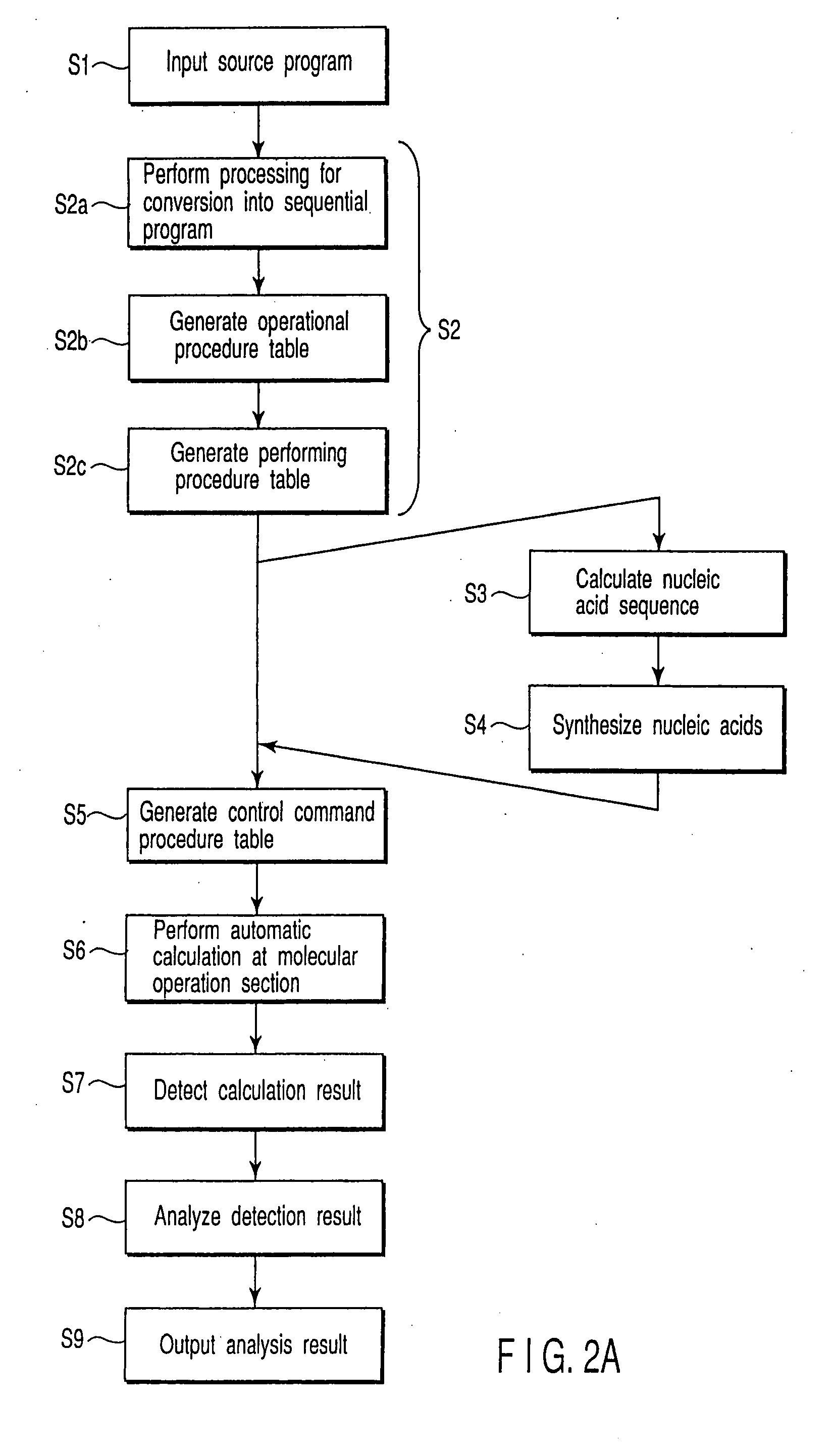Novel computation with nucleic acid molecules, computer and software for computing
- Summary
- Abstract
- Description
- Claims
- Application Information
AI Technical Summary
Benefits of technology
Problems solved by technology
Method used
Image
Examples
examples
1. Molecular Operation
[0221] The above described program of Equation 3 was performed by using the molecular computer of the present invention. A configuration of the computer is described below. A configuration of the computer performing the program is shown here. This computer was fabricated by modifying a nucleic acid automatic extraction device SX8G available from Precision System Science (PSS). This computer is comprised of: an electronic computer whose OS is Window98 mounting control Pentium IIICPU available from Intel Co., Ltd. (corresponding to the electronic operation section 21) and a reaction robot (corresponding to the molecular operation section 22). The reaction robot is comprised of a reagent vessel and a reactor for actually performing operational reaction; a pipette capable of XYZ position control; a preliminary pipette; and a thermal cycler (PTC-200 available from MJ Research Co., Ltd.). Disposition of a reaction member from the top of the molecular operation sect...
first embodiment
(a) FIRST EMBODIMENT
[0330] (1) Outline
[0331] The first embodiment in which the present invention is applied to a gene analysis will be explained. The first embodiment shows a gene analysis for determining the presence or absence of a gene by performing an operation using nucleic acids.
[0332] The analysis will be outlined below. First, a cDNA group is prepared based on a gene group expressed in a cell. Information regarding an expressed gene contained in the cDNA group thus prepared and an unexpressed gene not contained in it, more specifically, information on the presence / absence of a target gene is converted into another expression form such as a DNA molecule having an artificially designed sequence. The DNA molecule obtained by data conversion is hybridized to an operation nucleic acid. The operation analysis is performed in accordance with the aforementioned process. The DNA molecule used herein acts as a kind of signal which represents the presence / absence of a specific gene o...
second embodiment
(b) SECOND EMBODIMENT
[0371] According to a preferable embodiment of the present invention, an orthonormal sequence may be used as a DCN sequence in the method of First embodiment. The term “orthonormal sequence” is a nucleotide sequence artificially designed. The term “normal” means that sequences have the same melting temperature (Tm). The term “ortho” means that no mishybridization occurs and that stable structure is not formed within a molecule.
[0372] For example, to obtain the orthonormal sequence of 15 nucleotides, first, sequences each consisting of arbitrary-chosen 5 nucleotides are prepared. The short sequence of 5 nucleotides is called “tuple”. The types of tuples are 45=1024. From the 1024 types of tuples, three tuples are selected and connected to each other to form a 15 nucleotide sequence. The tuples complementary to these three tuples employed herein will not used thereafter. When a set of 15 nucleotides is prepared, care must be taken to set the melting temperature o...
PUM
 Login to View More
Login to View More Abstract
Description
Claims
Application Information
 Login to View More
Login to View More - R&D
- Intellectual Property
- Life Sciences
- Materials
- Tech Scout
- Unparalleled Data Quality
- Higher Quality Content
- 60% Fewer Hallucinations
Browse by: Latest US Patents, China's latest patents, Technical Efficacy Thesaurus, Application Domain, Technology Topic, Popular Technical Reports.
© 2025 PatSnap. All rights reserved.Legal|Privacy policy|Modern Slavery Act Transparency Statement|Sitemap|About US| Contact US: help@patsnap.com



